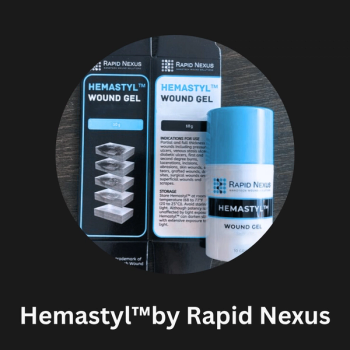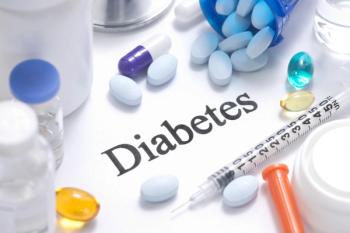
Why physicians may want to apply for the CPC+ program
The unveiling of a new alternative primary care payment plan by the Centers for Medicare & Medicaid Services (CMS) comes with several considerations-financial and otherwise-for practices considering participation in the five-year program.
The unveiling of a new alternative primary care payment plan by the
The 14 chosen regions that will implement the initiative, known as
ICYMI:
Other regions include the Greater Kansas City area in Kansas and Missouri, the North Hudson Valley region in New York, Northern Kentucky, as well as the Greater Philadelphia area.
Wanda Filer, MD, MBA, FAAFP, president of the American Academy of Family Physicians, says her organization is actively encouraging its members to apply through the application process. Eligible practices in the 14 regions have until September 15 to submit an application to CMS for participation.
“So far, people have a very healthy curiosity,” Filer says. “I'm not hearing a lot of negatives. They appreciate this opportunity to get better financial resources for practices and to get them off that hamster wheel and be able to care for people in between face-to-face visits.”
Further reading:
The areas selected were chosen based on support and interest from payers and practices, and will reach an estimated 5,000 primary care practices who serve around 3.5 million beneficiaries, according to CMS.
Two-track model for payments
Just like the earlier CPC initiative that launched in 2012, CPC+ practices will be paid a monthly care management fee, per beneficiary per month (PBPM). This is guided by
Physicians can choose to enroll in one of the two tracks in the program, and must stick with that track for the five years, but can withdraw from the plan without penalty. Under track 1, which is similar to the original CPC initiative, the average PBPM is $15.
Related:
Practices will also receive $2.5 PBPM up-front as a performance-based incentive, which might practices might have to pay back if they don't meet annual performance thresholds, and “thus be 'at risk' for the amounts prepaid,” according to CMS' website.
Under track 2, the monthly care management fee is higher at an average of $28 PBPM, and practices will get an extra performance-based $4 PBPM.
Additionally, practices applying to track 2 must include a letter of support from their respective health IT vendor. The letter outlines the vendor’s commitment to support the applicant practice with advanced health IT capabilities, CMS notes.
Christine Tremblay, director of product management at Amazing Charts, a electronic health record (EHR) vendor, says the letter “essentially enters us into an agreement with CMS for future functionality.”
More policy news:
“It's not well defined what role the EHR will play versus other technologies that the practice may have adopted already,” she adds.
However, the plan does allow for a “level of collaboration here that's new to the industry,” she says, mentioning how vendors, payers and physicians are signing up for quarterly meetings with CMS and agreeing to work toward improvement of CPC+.
Potential benefits of the initiative
In addition to the monetary compensation, Filer offered other benefits if practices get on board with CPC+.
“What I really hear, probably a lot more than the financial incentives, is this idea of having more time with patients,” Filer says.
She uses the example of an asthma patient. In a typical fee-for-service model, the way for a physician to be paid for working with the patient, is to have them “come in the door.” With CPC+, prevention and self-management play more of a role for compensation, and volume becomes less of a burden. So, if the asthma patient receives advice over the phone, makes medication adjustments like increasing their nebulizer, without going into the office, it allows for more time with those patients who might need more time and attention.
Hot topic:
As another example, she said the office can take note of the patients with asthma using their EHR and call to check their status, such as on a hot and humid day and write them a note to stay inside in an air conditioned building - therefore avoiding a more dire medical situation.
“If I can keep them going to work or going about their daily lives, and keep them out of the emergency department, and even better out of the hospital, and those are all the kinds of quality and cost effective care that I think CPC+ is designed to incentivize,” Filer says.
A lot of recent changes in the industry in combination with high volumes of care and population growth have created burnout among physicians, she adds.
“I think this kind of initiative for the practices who are in it, it may be a hedge for them for these burnout factors,” she says. “And that's really important if we want our workforce to keep going.”
More healthcare news:
Additionally, CPC+ qualifies as an alternative payment model (APM) under the Medicare Access and CHIP Reauthorization Act of 2015 (MACRA), which establishes CMS’ new Quality Payment Program reforming how physicians get paid for seeing Medicare patients. A final rule outlining the program is expected from CMS this fall.
Potential drawbacks
However, other models like accountable care organizations (ACOs) are a viable option, and Paul Ginsburg, PhD, director of the Center for Health Policy at Brookings, a center that conducts research, evaluates health care strategies and gives policy recommendation, adds that originally physicians participating in ACOs were not able to apply for CPC+.
“A real concern I had was whether this [CPC+] was going to be pulling primary care physicians away from ACOs,” Ginsburg says.
CMS later modified the requirements on May 27 on its FAQ page, stating that up to 1,500 of the anticipated 5,000 practices may be in Shared Savings Program ACOs.
Blog:
Ginsburg notes another concern about CPC+ in a May Health Affairs blog post, mentioning the “lack of incentives for primary care physicians to take steps to reduce costs for services beyond those delivered by their practices,” such as decisions in hospital or specialist referrals.
As for what practices will need in order to apply to CPC+, CMS lists
Both tracks require “sufficient revenue generated by Medicare and CPC+ payer partners,” but track 2 practices are also expected to have further clinical capacities like following up with patients following their discharge from the emergency department (ED) or hospital, to name a couple.
Going forward, Filer describes the qualities a practice might need in order to put this program into place.
“It's pretty clear that you're going to need a practice that has an appetite for change and some strong internal leadership - particularly strong physician leadership - either whole teams that kind of have to wrap their arms around this initiative and redesign the practice,” Filer says.
Newsletter
Stay informed and empowered with Medical Economics enewsletter, delivering expert insights, financial strategies, practice management tips and technology trends — tailored for today’s physicians.


















